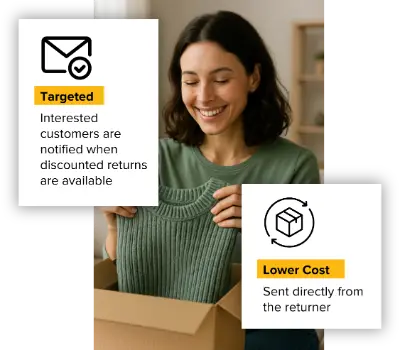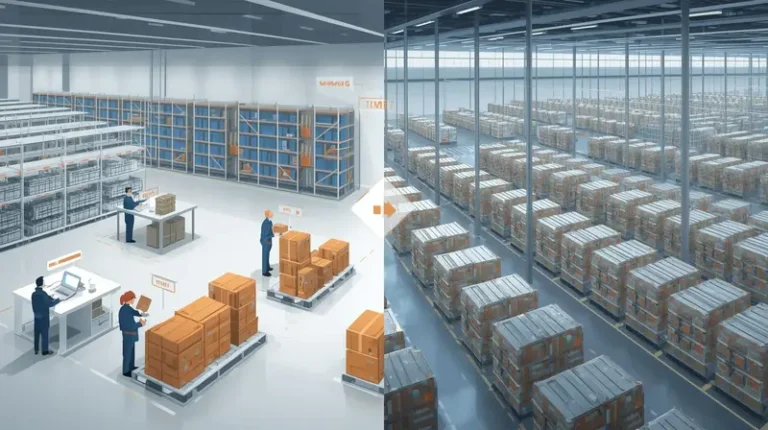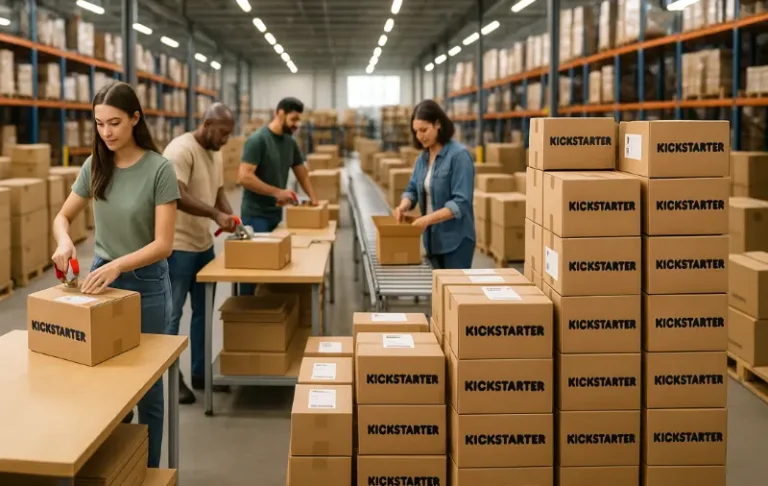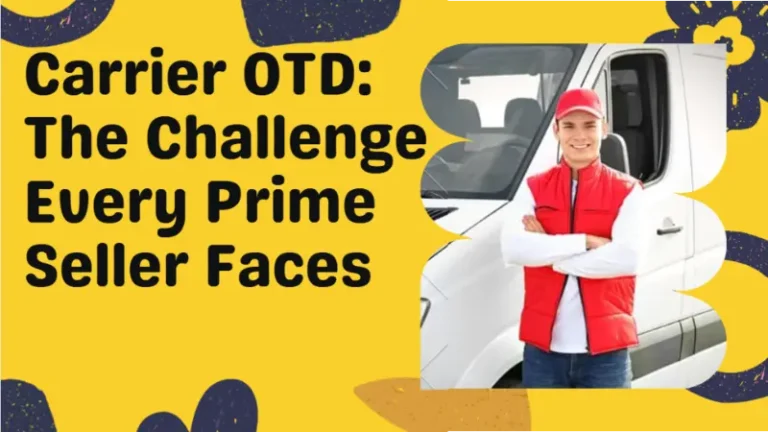Revolutionizing Order Fulfillment to Compete with Amazon’s Multi Channel FBA Operations

Last updated on February 3, 2025

In this article
 21 minutes
21 minutes
Listen to podcast here.
Ecommerce Wizards Podcast – What Are the Benefits of Fulfillment Networks With Manish Chowdhary of Cahoot
The podcast episode is an interview with Manish Chowdhary, founder and CEO of Cahoot, the world’s first peer-to-peer order fulfillment services network. Cahoot provides ecommerce brands and retailers with best-in-class order fulfillment services across multiple warehouses in the US, Canada, Mexico, and others, similar to Amazon FBA, but with a unique business model. Most of the warehouses belong to other brands and sellers who join Cahoot as order fulfillment partners to monetize their excess capacity. By passing the benefits onto their clients, Cahoot is able to offer lower costs and one-day two-day delivery nationwide. The episode focuses on DTC (direct-to-consumer) versus Amazon FBA, and how to compete with Amazon’s multichannel operations. As an experienced entrepreneur with over 20 years of e-commerce experience, Chowdhary shares his insights on the challenges and opportunities of DTC, multichannel operations, and direct order fulfillment. The episode is sponsored by MageMontreal, a certified e-commerce company specialized in the Adobe Magento platform.
Guillaume Le Le Tual:
Hello, everyone. Guillaume Le Tual here, host of the Ecommerce Wizards podcast, where I feature leaders in e-commerce and business.
Today’s guest is Manish Chowdhary, who’s the founder and CEO of Cahoot, which can be found at Cahoot.ai. Today, we’re going to talk about DTC, so direct-to-consumer. So DTC versus Amazon, how to try with multichannel operations. Quite a challenge right now at Amazon, how do you compete with them? So before we get started, our sponsorship message.
Audio:
This episode is brought to you by MageMontreal. If a business wants a powerful e-commerce online store that will increase their sales, or to move piled up inventory to free up cash reserves, or to automate business processes to reduce human processing errors, our company MageMontreal can do that. We’ve been helping e-commerce stores for over a decade.
Here’s the catch. We’re specialized and only work on the Adobe Magento e-commerce platform, also known as Adobe Commerce. We’re among only a handful of certified companies in Canada. We do everything Magento related. If you know someone who needs design, support, training, maintenance, or a new e-commerce website, email our team at support@magemontreal.com or go to magemontreal.com. That’s M-A-G-E, montreal dot com.
Guillaume Le Le Tual:
All right, Manish, thanks for being here today.
Manish Chowdhary:
Well, Guillaume, thank you very much for having me.
Guillaume Le Le Tual:
All right, so before diving main topic, I like to always spend a little bit of time, so you can tell us briefly, like a minute or two, your background as an entrepreneur.
Manish Chowdhary:
Yes, thank you, and thanks again for everyone tuning in. My name is Manish Chowdhary. I’m the founder and CEO of Cahoot. I have over 20 years of e-commerce experience, involved with building one of the first e-commerce platforms. This is going back to the days before Magento, Guillaume. So I’ve been involved in e-commerce for that long. And following that, I built an order management, inventory management platform. It’s a full-service solution. So I have seen and worked with SMB merchants, even large enterprise, for nearly two decades. And now, I’m running Cahoot, which was founded in, a few years ago in 2018. I can tell a little bit about Cahoot, if you like.
Guillaume Le Le Tual:
Yeah, go for it, because it’s very unique, the product you have. I think it’s something brilliant as the idea that it really stands out. That if I’m thinking what kind of business do I want to create, is the kind of idea I hope to have. So go for it.
Manish Chowdhary:
Thank you, Guillaume. That is very kind of you. It is indeed innovation. It is very innovative what we’re doing, Cahoot is the world’s first peer-to-peer, order fulfillment services network. What that means is Cahoot has multi-dozen warehouses throughout the US right now, and soon to be global, including Canada, Mexico, and others. And essentially, we provide brands and sellers, brands and retailers, with best-in-class fulfillment services, similar to Amazon FBA.
Slash Your Fulfillment Costs by Up to 30%
Cut shipping expenses by 30% and boost profit with Cahoot's AI-optimized fulfillment services and modern tech —no overheads and no humans required!
I'm Interested in Saving Time and MoneyWhether you are targeting two-day delivery nationwide, in that case, Cahoot can distribute your inventory across multiple order fulfillment centers and pick the lowest-cost carrier to get the order delivered in one day, two-day, and we support that. We do this regularly for our clients who want Amazon Seller Fulfilled Prime (SFP). Which is, essentially, an Amazon Prime-like service, but for merchants who wish to do self-fulfillment. So that is what the service is for the ecommerce brands and retailers.
But there’s a very unique business model behind that, which I’m happy to share. Which is, most of these warehouses belong to other brands and sellers that have their own warehouse that they’re operating for themselves. And if they have excess capacity in that warehouse, they join Cahoot as an order fulfillment partner and they get to monetize that excess capacity for the very first time.
So if you know of a merchant, if you know of a seller who has a warehouse, let’s say 40, 50 or any size warehouse and they have sufficient space, vacant, that is going unutilized, you can come and apply to become a Cahoot order fulfillment partner.
And that’s where our capacity comes from, that allows Cahoot to beat the rates that allows Cahoot to, and pass them onto our clients, because it’s a win-win. It’s a win for the fulfillment partner, because they’re making extra cash, and that’s, of course, a win for the brand or the retailer, because they get lower cost by design, and that’s what makes Cahoot very unique and innovative.
Guillaume Le Le Tual:
All right, well, it is a brilliant system, because you’re more or less building an Airbnb or a Uber, but on the B2B side of things, to… everybody can use their excess capacity for warehouse. Because it’s always a problem. Within time, you buy hardware regardless if it’s additional server resources or if you’re buying warehouse space, you buy a full warehouse and maybe you’ll use half of it, two-third of it or whatever, and then it’s never optimized. And you plan on running out of warehouse space and you need to buy a second warehouse, and it’s never going to be a hundred percent capacity utilization. So it is quite brilliant.
There’s a lot of operational challenges, from [inaudible 00:05:20] point of view. I don’t know your business that would need to be solved to operate this, and it’s probably why you’re the first one that I have heard of to move forward with this kind of model. And well, you’re pulling it off, you’re making it work right now. So, for sure, I’m very interested to know more about this and we’ll see how you can perhaps explain it a bit more throughout the episode here. And it is directly with our topic.
So DTC versus Amazon, so direct-to-consumer versus Amazon, how to drive multichannel operations here, in the sense that well, shipping with Amazon, if you are selling on Amazon, is extremely competitive. Amazon has warehouse all across the country. We’ll ship way faster than you for most places. With the city, you can have your package same day, next day, more or less. But if you’re a small merchant or medium-size merchant even, you have to ship across the country, there’s no way to get the goods that quickly there.
Manish Chowdhary:
Yeah, you’re right, Guillaume. Because sellers, it’s very hard to pull this off. And Amazon-like order fulfillment is not easy. There’s a lot of operational complexity and so on, but Cahoot handles all that, just like Uber, where the rider, for example, is not trying to connect with the driver, trying to negotiate the price of the ride, trying to alert the driver when to come in and all of those. So Cahoot has created a fully-managed service for the seller. It’s super-duper simple, because they send the inventory to Cahoot order fulfillment centers and Cahoot takes care of everything from that point on.
And for our order fulfillment partners on the other side, just like I’ll continue to use that Uber analogy. As a driver, we’ve made it super-duper simple for fulfillment partners to fulfill orders on behalf of Cahoot, because we take away all the decision-making, all the complexity that would be associated, so that it’s not a distraction from the core business. And that’s all leveraging our technology, which is patented. We’ve got tons of experience doing this, and that is what makes Cahoot so special. So, we’d love to chat with ecommerce brands and fulfillment partners who may be interested.
Guillaume Le Le Tual:
So let’s say, so to be as clear as possible, where are we at so far with you be building this network and how competitive can you be with Amazon, let’s say, with the Prime same-day, next-day fulfilling that Amazon has? Or, is it per region of the United States? Or, how are things shaping up right now?
Manish Chowdhary:
Oh, yeah, I mean, this is a reality. I mean, Cahoot is one of the only fulfillment services networks of its size that offers, or offers Amazon’s Seller Fulfilled Prime (SFP). So I’ll use a client example. So we have a client called Cali’s Books. They are a leading ecommerce brand. They sell personalized children’s books. These are, imagine Cinderella in Spanish that also teaches the kid to read, and you can record voices on top of that. So that maybe it’s a grandfather reading the book to the kid and so on. So it’s a very, very special brand.
And they’ve been growing, doubling year over year. And prior to Cahoot, they were using a bunch of different services. But as we know, Amazon routinely changes the storage capacity for ecommerce brands, even the ones that have been selling on Amazon for a long time. And they needed access to Amazon Seller Fulfilled Prime (SFP), because that 150 million prime shoppers, that membership, is very crucial, because Amazon shoppers love the Prime membership.
So there’s a program called Seller Fulfilled Prime (SFP), where you have to achieve two-day and one-day delivery. The metrics are super-duper high, it’s very hard to meet those standards from Amazon. So Cahoot has placed this Cali’s Books inventory in six, seven, eight different warehouses throughout the country, in the US, from Southern California to Greater New York City area, to the south, where the Texas, and then in the upper Midwest and so on, and you can imagine. And then Cahoot processes orders, retrieves the orders dynamically in real time from all the leading channels, Amazon, Walmart, Shopify, eBay, and all of the others.
And then routes the order to the fulfillment center that will be the closest and cheapest, that can get the order to the customer within the promised SLA, which includes, in many cases we need, as part of Seller Fulfilled Prime (SFP), you need to achieve at least 20% of your orders must achieve one-day delivery, not just two-day. So the bar is really high and we’ve be doing exceedingly well. This ecommerce brand is doing really a fantastic job on execution and Cahoot is their primary order fulfillment partner. So that’s just to give you, by way of an example how this all this all thing works.
Looking for a New 3PL? Start with this Free RFP Template
Cut weeks off your selection process. Avoid pitfalls. Get the only 3PL RFP checklist built for ecommerce brands, absolutely free.
Get My Free 3PL RFPGuillaume Le Le Tual:
Right, okay. And you’ve made your own study in this regard. If you have, regardless of which e-commerce platform, the Magento, a Shopify or something, versus selling on the marketplace, what the brand gives up, what the brand lose if they’re selling on the marketplace, or what they win, and how do you push back or fight back as a smaller brand versus the Amazon Marketplace.
Manish Chowdhary:
Yes, it is well understood, well known that marketplaces are growing faster than DTC sites. And I put marketplaces, Amazon, Walmart, eBay, Best Buy, Target Plus, all of these are marketplaces, because consumers love marketplaces. They trust the marketplaces, because the marketplaces offer a diversity of product. There’s a very large selection, and because it’s also competitive. Because multiple people are selling the same product, it creates a competition for the sellers to put their best foot forward, which means lower prices.
Not only do the customers get a large selection, a very competitive price. And then finally, where marketplaces really win is in shipping and order fulfillment. Because marketplaces, in order to get ranked high on, let’s say, Amazon, you not only have to offer a great price in order to win the buy box, but you also need to provide competitive shipping. Of course, if you’re using FBA, then FBA will target the Prime, one-day, two-day delivery. But if you’re shipping on your own, your shipping offer has to also be very competitive in order to rank high, which is where marketplaces shine.
And most DTC brands do not do that good of a job, and regardless of the platform that they operate, whether Magento or Shopify. We did a full study of top 50 DTC brands on Shopify and BigCommerce, and compared their offers to the ones on Marketplace. And I’m happy to share more if your audience is interested.
Guillaume Le Le Tual:
Yeah, sure. So what key findings did you have with that study?
Manish Chowdhary:
Yeah, so we actually studied the top 50 brands to our top 50 sites on Shopify and BigCommerce, and then looked for the same identical product on Amazon and Walmart marketplaces. And what we found, Guillaume, is that 60% of the time, 60% of the time, the products are found cheaper on marketplaces than the brand’s DTC site. And that is just one finding. Of course, on a marketplace there could be other sellers, resellers potentially selling.
But from a consumer perspective, if I want to buy a certain product, as long as it’s authentic, I really don’t care who’s selling it, because I want the best price and I’m protected, because Amazon ensures that my payment information, all the other personal information is safe. So, there’s a clear trend that marketplaces are performing better on prices.
Now, we also studied the shipping behavior on these marketplaces, and we found that three out of four times, you can not only get the products cheaper, but you can also get it faster on marketplaces than on the DTC site. So 73% of the time, you’ll get the product delivery faster, let’s say, on Amazon and Walmart than on the DTC sites. So clearly, the DTC sites have a lot to do in terms of catching up, if they want to compete with the Amazon and Walmarts of the world.
Guillaume Le Le Tual:
Agree with you. So more selection, cheaper, faster. And also, something that we take for more or less granted on many marketplaces and many sites, just an estimated date of arrival, there’s a lot of private website that don’t give you that option. So you’re like, okay, I’ll check out, but when do I get it? Do I get it in a week, two weeks, in one day, in two day? If you don’t offer that estimated date of arrival, I mean, that can lose your sales right there. I remember myself as a consumer sometime not placing the order, because I need to know when I get it, because I need it for a specific date for whatever, an event or something. So that does matter, for sure.
Manish Chowdhary:
Yep. You’re a hundred percent right. We call it date-certain shipping. And if you don’t, if you’re just putting up things like four- to seven-day delivery or two- to three-day delivery, the consumer cannot do that math or doesn’t want to do that math. I don’t know what that means, four- to seven-day delivery. Does it include weekends? When will the product ship? Is it counted from today? Is it counted from tomorrow? What’s your processing time? All of those.
So that’s another clear advantage, as you rightly said, that individual DTC sites, most of them do not offer that level of what we call visibility into “When will my product arrive if I pick this option?” In addition to, of course, marketplaces reward free shipping. So any seller that’s offering free shipping will have an edge on marketplaces. Of course, there’s no such body to govern on your DTC site, because you’re making the rules. But keep in mind that the winds of change are happening, and brands and retailers, they need to get serious about offering and leveling that playing field if they want to compete on their DTC sites.
Scale Faster with the World’s First Peer-to-Peer Fulfillment Network
Tap into a nationwide network of high-performance partner warehouses — expand capacity, cut shipping costs, and reach customers 1–2 days faster.
Explore Fulfillment NetworkGuillaume Le Le Tual:
Yeah, exactly. Okay. And the model that you propose as a solution here, say, “Hey, let’s all group together, let’s band together. Let’s create a power of distribution and network by creating alliance with people that were previously not aligned together, not coordinated together.” So you’re coordinating the uncoordinated, so to speak, building a network, that then you can even compete with Amazon’s shipping and so on. Nothing’s perfect anymore. So there’s positive and negative. So we heard a lot about positive. What’s the downside of this approach or challenges or issues that someone might face?
Manish Chowdhary:
Well, I mean, ensuring quality is always a challenge in a warehouse, even with Amazon Prime. I’m a Amazon Prime subscriber in the US, and we, my family and I, we order quite a bit of stuff. And we know that Amazon Prime routinely fails on its delivery promise, even though they say, okay, the product is going to arrive, let’s say, on a Friday or Saturday. Many times, it doesn’t show up till Monday. But I know behind the scenes, Amazon is working feverishly to ensure that those promises are met.
And so, likewise, for Cahoot, the problems are very similar, that holding our order fulfillment partners and warehouses strictly accountable, which Cahoot does a fantastic job. My team is always on top of it, ensuring that products are delivered defect free, meaning product goes to the right customer at the right time. And of course, we need to work with carriers, UPS, FedEx, USPS, and many other regional carriers. Sometimes, they screw up, and it happens. Products do get damaged in transit, for no fault of the carrier and so on.
So, those are all the things that impact customer experience. Because the customer may or may not be privy to all that information that, hey, did the UPS damage the product or was the product damaged at the warehouse? Did the product come damaged from the factory in China to begin with? Because we can’t see all that. So the problems are real, but Cahoot maintains a very, very high standard of accountability and only lets the best in the business join as order fulfillment partners. And that’s why we have a very strict vetting process to make sure that we are only bringing in the best and holding them accountable every single day.
Guillaume Le Le Tual:
Even Amazon with all their, I don’t know how many millions or billions they’ve invested in robotics, probably billions. So, for sure, actually billions. They lose packages, they lose inventory. I speak with so many merchants that are selling on Amazon, and yeah, you have to claim lost merchandise from the Amazon warehouse, that Amazon has no clue. They’ve misplaced your package. So that happens everywhere, no matter how much AI and robotic you put in place, and especially the Amazon warehouse.
It’s messy, it’s not sorted out, alphabetically or numerically. The robot knows where it is. So if the robot goes, pick the package there and it’s not there, you’re screwed. Package is lost in chaos, basically. So that happens everywhere, that that’s for sure. And the other important thing to remember when you’re talking your own shop or direct-to-consumer versus selling on marketplaces, on marketplaces, you do not own the relationship with the customer. You do not own your customer’s list.
Somebody buys from you from Amazon, but you don’t know who is buying from you. You cannot send them an email and a text message, and you cannot market to them after, do some remarketing and so on. So this is huge, because you’re losing the ability to build an asset, which is a customer base. So it’s really like a money transactional relationship with Amazon. You say, “Thank you for the transaction. Thank you for helping me grow my business,” but this could dry out and I don’t own the relationship with the customers.
And very critical point to keep in mind, to always diversify away from marketplaces so that you can own your own customer list and your own relationship with customer, that you can send texts and emails to. So, to wrap up with this topic here, anything else top of mind that you think that merchants should know about how to drive in this kind of multichannel operation and DTC versus Amazon?
Manish Chowdhary:
Yeah. In summary, on this topic, Guillaume, I would urge every seller to target an Amazon-like order fulfillment. And I know that many sellers that I speak with, sometimes they’re not fully sold on the idea, because many of them will say, “Oh, my customers don’t demand it.” No, of course they don’t. They’re not going to come and tell you that, they just going to go elsewhere. They’ll buy it on Amazon, they’ll buy it on other places.
I think, especially with… Amazon just recently launched this program called Buy With Prime, which I know we will cover later on, either in this podcast or another session. The consumer expectations are not getting any reduced or is not getting tempered. If anything, customers want their products faster and they want their products free and fast shipping. And solutions exist. I think sellers and brands and retailers should not think that they cannot do it affordably.
I would invite them to come talk to Cahoot. We can do some analysis, we can tell you. And if there are merchants who have warehouses, whether it’s Canada or in the US, that have spare capacity, that run a tight ship, I’ll encourage them to also contact us, if they’re looking to make some extra cash. So, the world is moving to distributive order fulfillment. My parting thoughts is that everybody should embrace it, because if you’re not, you’re going to find yourself in a tight spot sooner than later.
Guillaume Le Le Tual:
Right. Well, thank you for sharing all that information, Manish. If somebody wants to get in touch with you, what’s the best way?
Manish Chowdhary:
Well, hop over to cahoot.ai, that’s www dot Cahoot, singular, dot AI and fill out the contact us form. And if you want to connect with me directly, please find me on LinkedIn. I’m very active. Just search for my name and Cahoot, that’s C-A-H-O-O-T. And please connect with me, message me. I’d love to chat with you.
Guillaume Le Le Tual:
Awesome. Well, thanks for being here today, Manish.
Manish Chowdhary:
Thank you for having me.
Turn Returns Into New Revenue
